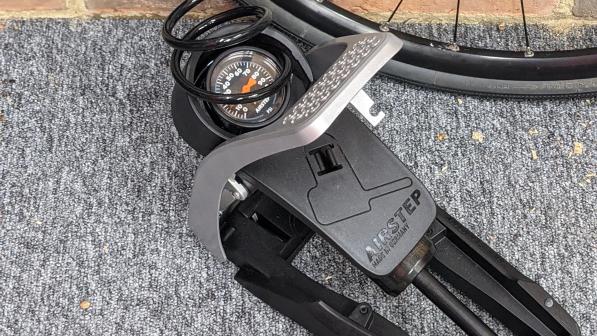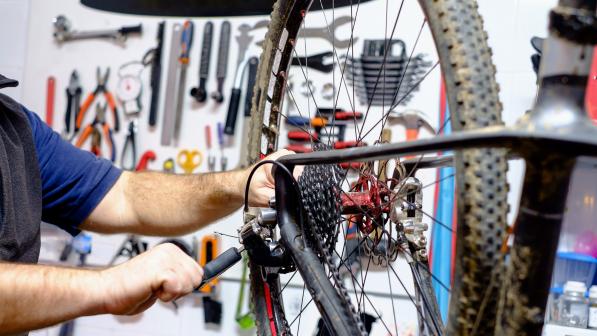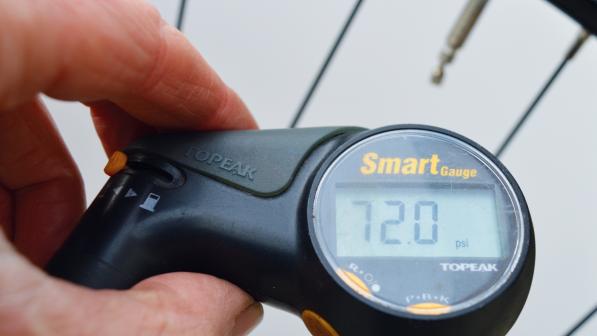A guide to cycle tyre sizes

How do you know what size tyres will fit your bike? It should be easy: buy exactly the same model of tyre as those already on the bike. Of course, this isn’t much help if identical tyres aren’t readily available, if you fancy something different or if you’re looking for replacements in unusual and hard-to-find sizes.
If so, then you’ll need to check the markings to be found on the side of the tyre. It’s worth noting that these markings have the potential to cause confusion, not least because a tyre’s ‘size’ can be hard to pin down.
One way to define it, popular in times past, was to measure the tyre’s outside diameter and its maximum width when inflated, but this can be misleading. For example, some tyres marked 28" are actually much less than 27 inches in diameter, while 26×1.5 and 26×1½ are two completely different sizes.
To bring some order to the situation, most tyres are now marked according to the International Standards Organisation (ISO) in addition to more familiar markings. The ISO size comprises two numbers separated by a dash.
The three-digit number after the dash is the more important. This is the bead diameter at which the tyre fits onto the rim.
Check the bead diameter of the tyres on your bike. If you’re ever in desperate need of a tyre and can find one with the same bead diameter, it will probably fit even if every other thing about it is different; any tyre marked xx-622 will, at a pinch, fit any 622mm rim.
The initial two-digit number is the tyre section and roughly indicates the tyre width. Its actual width is normally less, but varies according to how the tyre is designed and the width of rim to which it is fitted. But the height of the tyre usually corresponds quite closely to tyre section, so overall diameter approximately equals the bead diameter plus twice the section.
That’s how the diameter and circumference (circ – equals distance rolled in one turn of the wheel) are calculated in the Tyre size table. These figures are useful for setting your cycle-computer and precisely calculating gears.
Half of the bead diameter (that is, the bead radius) corresponds with the distance from the centre of the wheel to the centre of a brake block. By comparing this dimension you can see if the brakes will reach when a different size rim is fitted to your bike. Switching from 630 to 622, for example, needs another 4mm of brake reach.
Imperial, metric and American
Sometimes you can’t find any ISO size on a tyre, only the old-school markings. Although they’re familiar they can be confusing. Tyres of the same size may come with lots of different markings: 28×1¼×15/8, 28×1¾×1¼ or 700×32C, for example, which are all 32-622.
Even worse, the same or very similar markings can sometimes be found on completely different sizes of tyre: 26×1½ and 26x1.5. It might be supposed that these two tyres are both notionally 26" diameter and one and a half inches in width, but 26×1½ is a whole inch bigger than 26×1.5.
The former is ‘fractional’, the latter ‘decimal’, and as a rule decimal and fractional tyre sizes that look the same are not.
As far as possible, then, use these columns to convert to ISO dimensions and then have nothing more to do with those old markings!
Refer to the columns headed Imperial, Metric or American in order to work out what actual (ISO) size you have. The first two headings need no explanation. The American column is for tyre sizes originating in the USA and where US markings may confuse.
Note that American- and Japanese-branded road tyres tend to be smaller than described and often lack any ISO markings.
Tyre size table
The table below lists most of the sizes of tyre that are likely to be found in the UK. Where you see a block of two or more compatible sizes, having the same bead diameter, you can assume that intermediate sizes exist that will also fit the same rim. For example, between 18-622 and 25-622 there are tyres of 19, 20, 22 and 23mm section.
| Tyre size table | ||||||
|---|---|---|---|---|---|---|
| ISO sect-dia |
Imperial | Metric | American | Tyre diameter (mm) / (in) |
Circ (m) |
|
| 40-635 | 28×1½ | 700B | 28×1 1/2 | 715 | 28.1 | 2.25 |
| 25-630 | 27×1 | 27×1 1/8 | 680 | 26.8 | 2.14 | |
| 32-630 | 27×1¼ | 27×1 3/8 | 694 | 27.3 | 2.18 | |
| 18-622 | 700×18C | 658 | 25.9 | 2.07 | ||
| 23-622 | 700×23C | 668 | 26.3 | 2.1 | ||
| 25-622 | 700×25C | 28×1.0 | 672 | 26.5 | 2.11 | |
| 28-622 | 28×15/8×11/8 | 700×28C | 28×1.1 | 678 | 26.7 | 2.13 |
| 30-622 | 700×30C | 28×1.2 | 682 | 26.8 | 2.14 | |
| 32-622 | 28×15/8×1¼ | 700×32C | 686 | 27 | 2.16 | |
| 37-622 | 28×15/8×13/8 | 700×35C | 28×1.4 | 696 | 27.4 | 2.19 |
| 40-622 | 700×38C | 28×1.5 | 702 | 27.6 | 2.2 | |
| 42-622 | 700×42C | 706 | 27.8 | 2.21 | ||
| 47-622 | 700×47C | 28×1.75 | 716 | 28.2 | 2.25 | |
| 50-622 | 29×2.0 | 722 | 28.4 | 2.27 | ||
| 57-622 | 29×2.25 | 736 | 29 | 2.31 | ||
| 60-622 | 29×2.35 | 742 | 29.2 | 2.33 | ||
| 32-597 | 26×1¼ | 661 | 26 | 2.08 | ||
| 28-590 | 650×28A | 646 | 25.4 | 2.03 | ||
| 37-590 | 26×13/8 | 650×37A | 26 × 1 3/8 | 664 | 26.1 | 2.09 |
| 42-590 | 650×40A | 26 × 1 5/8 | 672 | 26.4 | 2.11 | |
| 28-584 | 650×28B | 640 | 25.2 | 2.01 | ||
| 30-584 | 27.5×1.2 | 644 | 25.3 | 2.02 | ||
| 32-584 | 650×32B | 27.5×1.25 | 648 | 25.5 | 2.03 | |
| 37-584 | 650×37B | 27.5×1.35 | 658 | 25.9 | 2.06 | |
| 40-584 | 26×1½ | 650B | 27.5×1.5 | 664 | 26.1 | 2.09 |
| 42-584 | 27.5×1.6 | 668 | 26.3 | 2.1 | ||
| 50-584 | 27.5×2.0 | 684 | 26.9 | 2.15 | ||
| 57-584 | 27.5×2.25 | 698 | 27.5 | 2.19 | ||
| 60-584 | 27.5×2.35 | 704 | 27.7 | 2.21 | ||
| 65-584 | 27.5×2.6 | 714 | 28.1 | 2.24 | ||
| 70-584 | 27.5×2.8 | 724 | 28.5 | 2.27 | ||
| 20-571 | 26×¾ | 611 | 24 | 1.92 | ||
| 23-571 | 26×1 | 617 | 24.3 | 1.94 | ||
| 40-571 | 650C | 651 | 25.6 | 2.05 | ||
| 25-559 | 26×1.0 | 609 | 24 | 1.91 | ||
| 28-559 | 26×1.2 | 615 | 24.2 | 1.93 | ||
| 32-559 | 26×1.25 | 623 | 24.5 | 1.96 | ||
| 35-559 | 26×1.35 | 629 | 24.7 | 1.97 | ||
| 40-559 | 26×1.5 | 639 | 25.2 | 2.01 | ||
| 47-559 | 26×1.75 | 653 | 25.7 | 2.05 | ||
| 50-559 | 26×2.0 | 659 | 25.9 | 2.07 | ||
| 57-559 | 26×2.125 | 673 | 26.5 | 2.11 | ||
| 28-541 | 600×28A | 597 | 23.5 | 1.88 | ||
| 37-541 | 600×35A | 615 | 24.2 | 1.93 | ||
| 32-540 | 24×13/8 | 604 | 23.8 | 1.9 | ||
| 28-520 | 24×11/8 | 576 | 22.6 | 1.81 | ||
| 37-507 | 24×1.5 | 581 | 22.9 | 1.83 | ||
| 47-507 | 24×1.75 | 601 | 23.7 | 1.89 | ||
| 37-501 | 22×13/8 | 575 | 22.6 | 1.81 | ||
| 37-489 | 22×13/8 | 563 | 22.2 | 1.77 | ||
| 28-451 | 20×11/8 | 507 | 20 | 1.59 | ||
| 35-451 | 20×13/8 | 521 | 20.5 | 1.64 | ||
| 28-440 | 500×28A | 496 | 19.5 | 1.56 | ||
| 32-440 | 500A | 504 | 19.8 | 1.58 | ||
| 28-406 | 20×11/8 | 462 | 18.2 | 1.45 | ||
| 35-406 | 20×1.35 | 476 | 18.7 | 1.49 | ||
| 37-406 | 20×1.5 | 480 | 18.9 | 1.51 | ||
| 47-406 | 20×1.75 | 500 | 19.7 | 1.57 | ||
| 54-406 | 20×2.0 | 514 | 20.2 | 1.61 | ||
| 32-369 | 17×1¼ | 433 | 17 | 1.36 | ||
| 28-355 | 18×11/8 | 411 | 16.2 | 1.29 | ||
| 40-355 | 18×1.5 | 435 | 17.1 | 1.37 | ||
| 47-355 | 18×1.75 | 449 | 17.7 | 1.41 | ||
| 35-349 | 16×1.35 | 419 | 16.5 | 1.31 | ||
| 37-349 | 16×13/8 | 16×1.5 | 423 | 16.7 | 1.33 | |
| 32-340 | 400A | 404 | 15.9 | 1.27 | ||
| 37-340 | 400×35A | 414 | 16.3 | 1.3 | ||
| 47-305 | 16×1.75×2 | 399 | 15.7 | 1.25 | ||
| 47-203 | 12×1.75 | 297 | 11.7 | 0.93 | ||
Tyre-rim compatibility
Two tyres with the same ISO markings are completely interchangeable, even if one seems to be metric and the other is also marked in inches. For example, 650B and 26×1½ are both 38-584 and should be marked accordingly. Look for the ISO numbers and you always know exactly where you are.
Some rims are also now marked according to ISO with their bead diameter and internal section (width where the tyre fits); 622-17 for the size usually fitted to touring and hybrid bikes, for instance. But some manufacturers give the overall width instead. Subtract 6mm from overall width to estimate the rim section, or simply measure the distance between the flanges.
If the rim is not marked with its bead diameter you can read this from the tyre – it’s the one dimension they have in common.
The ideal relationship between tyre and rim section is about 1.8 to 1, but any tyre from 1.4 to 2.2 times should fit – always provided that the bead diameters correspond.
Nowadays almost all rims have hooked flanges (required to retain folding tyres) that will hang onto tyres up to three times their width. This increases the cushioning effect: you get more comfort out of the same tyre at the same pressure when you fit it to a narrow rim – yet it still rolls just as easily.
On the other hand it increases the stress on the sidewall of the tyre. Mountain bike tyres are designed to take this extra stress but road tyres are not.
Another reason not to exceed the 2.2 limit on road is that a more bulbous tyre can deflect side ways with a noticeable effect on control and road holding. Conversely, fitting a tyre of less than 1.4 times the rim section will result in a harsh ride and more rolling drag than a larger tyre at the same pressure.
Tubeless tyres
Tubeless tyres, as the name suggests, do away with an inner tube and, in its absence, are reliant on the shape and tightness of the tyre bead to ensure the tyre doesn’t blow off the rim at high inflation pressures; in a conventional clincher tyre, the inner tube keeps the bead securely located under the rim hook.
Tyres suitable for use with dedicated tubeless rims, or with a conversion system which employs tape to seal the rim bed, are marked using a sidewall decal such as tubeless-compatible, tubeless-ready, tubeless-easy or similar. They have a special stretch-resistant folding bead made, usually, of carbon fibre.
There is no industry-wide convention for tubeless tyre fitment and satisfactory results are mostly likely using parts made for use together such as Mavic’s UTS (Universal Tubeless System) tyres and rims. Nevertheless, tubeless-compatible tyres are generally available in the standard 29"/700C/622mmISO, 27.5"/650B/585mmISO and 26"/559mmISO formats.
It is inadvisable to use non-tubeless tyres without an inner tube as there is a risk of tyre blow-off.
Tubular tyres
Used primarily for racing, tubular tyres must be fixed to an appropriate rim using glue, cement or adhesive tape. Most tubulars likely to be encountered today will fit a rim with the same brake track diameter as a 700C clincher rim, and are may be referred to as 28", 27" or even 700C or similar. These will all fit the same size rim.
Tubular tyres require skilled fitting; if unsure, consult a suitably trained cycle mechanic. Other sizes including 26" may be encountered; these are rare and it is advisable to make a direct match with a rim before buying.
Recommended pressures
All tyres are marked with a pressure. Sometimes this is an absolute maximum that nobody should need to exceed, or sometimes only a recommended maximum that may be exceeded by heavier riders (such as tandemists).
Off-road tyres are usually marked with a pressure range, from the minimum that will support a rider of average weight to the absolute maximum. Do not exceed the maximum when tyres are marked with a range.
















